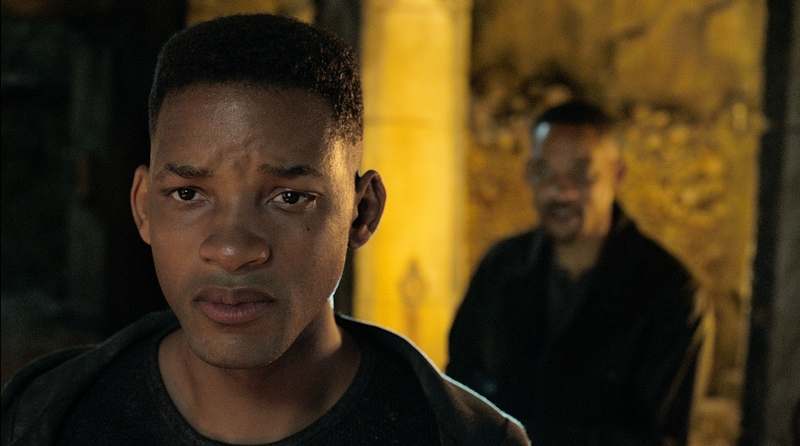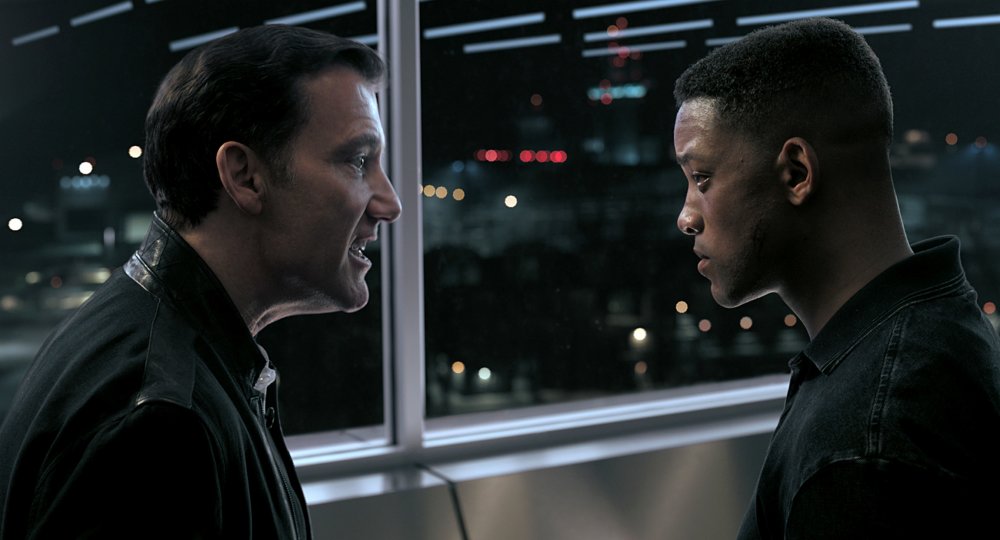
There’s a reason that movies are classically referred to as motion pictures: They move. Silent or talkie, black-and-white or Technicolor, the quintessence of cinema over the past hundred-odd years is the collective experience of watching images in motion. In the Harry Potter books, J.K. Rowling imagined portraits wherein the subjects ceaselessly shift and budge, a clever conceit that also underlined just how miraculous real movies are. They’re magic brought to life.
Ang Lee has contributed more to this paranormal art form than most, in variety if not in volume. Over a startlingly diverse 12-year stretch (from 1995 to 2007), he made a Jane Austen period piece, an incisive family drama, a war picture, a martial-arts fantasy, a comic-book adaptation, a romantic weepie, and a political thriller. But in his late period, Lee has taken to tinkering with the machinery of the movies itself, to exploring new ways of beaming images onto a silver screen. His Life of Pi, while narratively and thematically flimsy, is one of the few films to make productive use of 3D; scenes of a young man traversing an ocean with a computer-generated tiger were gripping in their visual splendor. Then came Billy Lynn’s Long Halftime Walk, which Lee shot not just in 3D but at 120 frames per second (five times the industry standard of 24), a useless flourish which disguised the fact that the movie was the most forgettable thing he has ever made. Rather than course correcting, Lee has now (ahem) doubled down on the gambit with Gemini Man. It’s an ambitious folly that might start cementing Lee’s unfortunate cinematic legacy, that of a once-gifted storyteller who became so obsessed with changing how movies look and move, he forgot to make them good.
And Gemini Man is bad, in both usual and unusual ways. In one sense, it’s your typical crappy blockbuster, with a feeble plot, thin characters, and cringeworthy dialogue. In one scene, the erstwhile assassin Henry Brogan (Will Smith) asks a shadowy underworld figure why they can’t just fire a missile at their intended target. “That is exactly what we are doing,” the man replies, “except you are the missile.” Uh huh.

These flaws are not uncommon, nor are they fatal; many stupid movies are nevertheless made entertaining through filmmaking verve and nimble choreography. Where Gemini Man attempts to distinguish itself—and where it fails so spectacularly—is through its aesthetic presentation. To be precise, Lee shot the movie in (alphanumeric soup alert) 120 fps 4K 3D, a newfangled format that, as fate would have it, is accessible at precisely zero American theaters. (For the record, I saw the movie in 120 fps 2K 3D, at one of 14 theaters in the country equipped with such technology; in most places, if you choose a “high frame rate” (or “HFR”) showing, you’ll be paying extra to see the 60 fps version.) It’s a heavily digitized look that emphasizes sharpness and speed, with none of the grain of film stock. In some ways, it’s similar to the “motion smoothing” setting on your television—you know, the one that Tom Cruise yelled at you to turn off.
Now, I do not consider myself a purist, nor am I inclined to discourage artists from innovating. I don’t hate digital photography on principle (David Fincher! Michael Mann!), and I applaud efforts to stretch the boundaries of cinema, to push it in exciting new directions. “It’s different from what I’m used to” isn’t a criticism so much as a bleat, and if such fundamentalism were allowed to take root, countless titles that have advanced the medium—and which are now quaintly regarded as classics—never would have been made.
And yet: Gemini Man just looks wrong. The image is slick, flat, and waxy. The actors’ movements are captured with such fluidity that they almost don’t seem real; it’s plasticky rather than graceful. Even in static dialogue scenes, the camera is always processing rather than just capturing, reminding you of its restless activity. For other enhancements (such as 3D), your mind tends to adjust over time so that you gradually stop noticing them; Gemini Man runs nearly two hours, and I was distracted by the HFR for virtually every minute. Whether this is a product of my brain having been ruthlessly trained to watch films at 24 fps, or whether it is a violation of some sacred natural order, I do not care. The end result is a movie that appears to have been created with the world’s most expensive and superfluous camcorder.

The purported reason for this technique, beyond Lee’s general interest in experimentation, is to facilitate the “de-aging” applied to Smith’s face. In addition to Henry, Smith plays Junior, a cloned version of himself who’s virtually identical, except that he’s 25-30 years younger. (If you think that’s a spoiler, you’ve never watched the film’s trailer, or even read its tagline.) Whether because of the HFR or some other computer wizardry, the process is successful; Junior really does look like he just stepped off the set of Fresh Prince. One of the typical problems with de-aging (soon to be used on Robert De Niro’s rumpled mug in Martin Scorsese’s The Irishman) is that it makes facial features appear too smooth, which is presumably where the HFR comes in; when everything feels like a special effect, the actual special effects become invisible.
And as a superstar vehicle for Smith, Gemini Man does its job well enough. Now 51 years old (but also younger!), this man in black is as watchable as always, and he gives Junior a plaintive, wounded quality that contrasts nicely against Henry’s relaxed wisdom. Lee has surrounded his main attraction with splendid ornamental players; Mary Elizabeth Winstead is both tough and charming as Henry’s handler-cum-partner, while Benedict Wong is fine wine as a grizzled pilot. As for the sneering bad guy, the excellently named Clay Varris, Lee could hardly have made a better hire than Clive Owen, whose false decency only makes his heavy all the more despicable.
Varris, who runs a paramilitary outfit called Gemini, is also linked to Henry’s former bosses at the Defense Intelligence Agency, who consider him a liability now that he’s traded in a career of sniping terrorists on bullet trains for a life of hooking trout at a Georgia marina. Or something. Gemini Man is basically a reheated Bourne movie (see also: Haywire, Jack Reacher), with an elite killing machine fleeing the pitiless government who once nurtured him and now seeks to destroy him; the twist here is that Varris, who has raised Junior from his inception while posing as his adoptive father, dispatches the boy to eliminate his elder doppelganger. (The script, which is credited to David Benioff, Billy Ray, and Darren Lemke, apparently underwent numerous rewrites over the past 20 years; it shows.) That setup is catnip for spy-fiction junkies, those of us who crave stories about globe-trotting agents and sinister “assets” and freighted “meets” and vast conspiracies. But while Gemini Man superficially includes all of that material, it doesn’t bother to imbue it with any flavor, resulting in a desultory story that fails to develop any allure or momentum.

Not surprisingly, Lee devotes far more energy to the movie’s action scenes, but even these are ineffectual. There is one happy exception: a motorcycle chase through the streets and rooftops of Cartagena, where Junior wields his bike as though it’s an extra limb. It’s the only moment when Gemini Man feels truly alive, unburdened by both its oppressive technological baggage and its deeply silly narrative. The remainder of the set pieces, however, are familiar and inert. A brawl between Henry and Junior in Budapest’s catacombs, which should sing with the possibility of Smith-on-Smith crime, is too hectic and darkly lit to be absorbing, while a late shootout involving Varris’s mercenaries suffers from the usual problem of heroes randomly gunning down anonymous henchmen.
In theory, there’s a sliver of poignancy in the simmering battle between Henry and Junior, the tension between a man trying to change his fate and repeating the same old mistakes. But that conflict remains theoretical; Lee never probes it with any real interest. He’s too preoccupied with his fancy new cameras, with the challenge of concocting a whole new cinematic experience. And that’s the true irony of Gemini Man. Its only noteworthy feature—that ungodly frame rate—doubles as the worst thing about it. That’s hardly the twin bill Lee had in mind.
Grade: C-
Jeremy Beck is the editor-in-chief of MovieManifesto. He watches more movies and television than he probably should.
